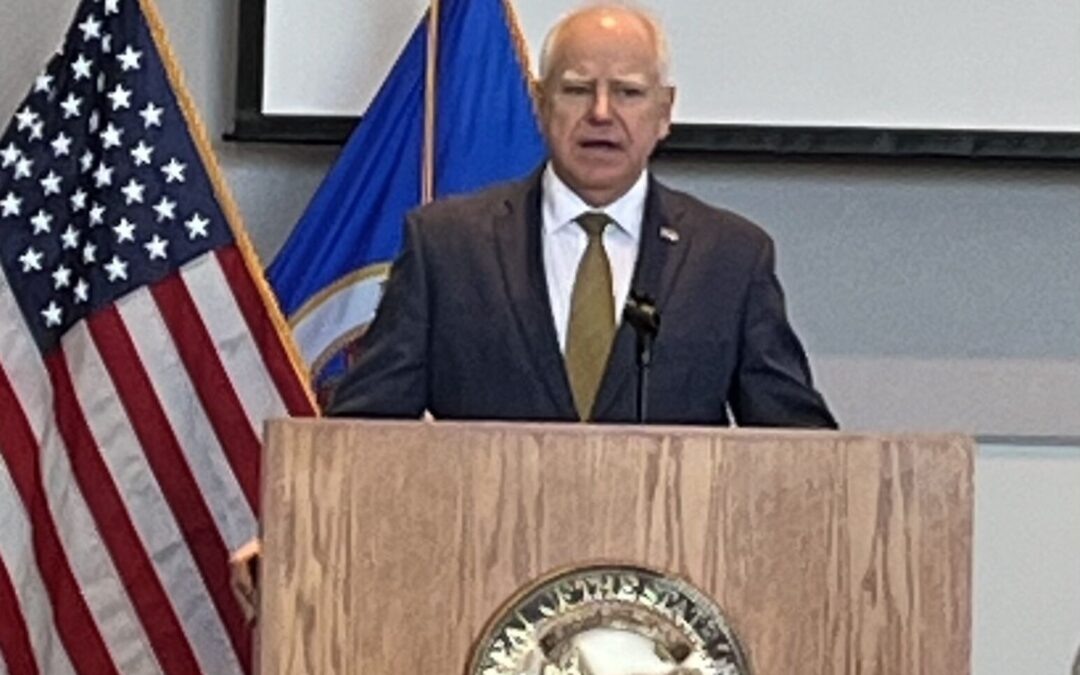In a new video, Minnesota Governor Tim Walz carries the national Democrat’s message about health insurance subsidies home to Minnesota, while playing indoor miniature golf. As he miraculously makes put after put, Gov. Walz repeats the dead-wrong talking point that all advanced premium tax credits are going away. That is simply not true.

Source: https://x.com/Tim_Walz/status/1980640087273877694
“When I was in congress, I voted for the affordable car act that put subsidies in there to lower the cost of health care.” Walz says. True enough. On March 21st, 2010, as a congressman, Walz voted for Obamacare and within that bill, he voted for the misguided practice of directing payments around the patient and directly to the insurance plans without the patient ever knowing.
The Advance Premium Tax Credits (APTCs) under the Affordable Care Act (ACA) that subsidize monthly health insurance premiums through Marketplace exchanges, were enhanced in the 2021 American Rescue Plan Act and extended through 2025 by the 2022 Inflation Reduction Act.
This temporary, pandemic-era infusion of money made these credits more generous by lowering the required income-based premium percentages and eliminating the 400% Federal Poverty Level (FPL) eligibility restriction.

Source: https://x.com/Tim_Walz/status/1980640087273877694
Walz goes on to say that the Republicans are now eliminating “those” (tax credits that he voted for in 2010) and using the money to give tax cuts to “the wealthiest.” However…..
In 2022, Democrats in Congress voted to eliminate the temporary pandemic subsidies in 2026. Not a single republican voted yes. If Governor Walz doesn’t like the subsidies proposed in 2026, he needs to do his homework a little better because that is exactly what he voted for in 2010.
The Advanced Premium Tax Credits aren’t going away; they are going back to pre-pandemic levels. Walz did not oppose the sunsetting of temporary Medicaid expansions in the years following the pandemic that “kicked off” (as he would likely say) 238,486 people from Medicaid in Minnesota between 2023 and 2025. Many have since become insured through other programs or found private insurance through work. Many who are facing higher premiums will join an employee plan that will respond to this demand.
However, not all of the folks in this pool are people at all. Many are “phantom enrollees” that were signed up by unscrupulous insurance brokers to obtain easy stimulus money and according to many such patients “never knew they were being signed up for insurance.” A Paragon study recently found that “Individual coverage exchange plans created by the Affordable Care Act (ACA) have a glaring problem: nearly 12 million enrollees, or 35 percent of all exchange enrollees in 2024, do not use their benefits at all.2” Paragon believes that as many as half these do not know they have this insurance. They likely have another public plan or private coverage. The study notes an explosion in the number of people in the individual market who do not ever present for medical care for any reason, while a similar spike was not seen in the group market.
And that’s the problem when money is simply given by the government to a company on behalf of a patient. The Center of the American Experiment found that as many as one-in-five Medicaid enrollees similarly did not know they had Medicaid. Some were on another program, some were in another state, or on a private plan. Others were dead. But your tax dollars were still being spent every month to pay an insurance company on their behalf.
Here are the facts. More than 20,000 undocumented immigrants on MinnesotaCare will cost the state of Minnesota over $104 million this year and they will pay nothing. Many able-bodied unemployed young people who live with their parents will get Medicaid and will pay nothing. After the pandemic, there are 50,000 more people on Medicaid in Minnesota than when it started five years ago. They pay nothing. It isn’t fair that such a small fraction of people should shoulder the volatility of the market changes caused by foolish policy decisions by the fabulists who doubled the cost of care since Obamacare.
Democrats in the US Senate need to vote for the clean spending resolution that is on their desk. That will reopen the government so bipartisan work can begin to solve the upcoming challenges in expanding access and smoothing out cost spikes.

